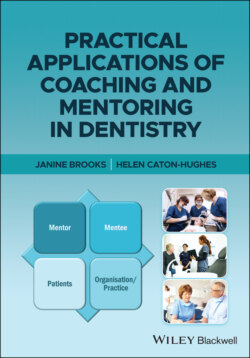Читать книгу Practical Applications of Coaching and Mentoring in Dentistry - Janine Brooks - Страница 16
References
Оглавление1 Clutterbuck, D. (2001). Everyone Needs a Mentor: Fostering Talent at Work. Chartered Institute of Personnel and Development.
2 Colley, H. (2002). A ‘rough guide’ to the history of mentoring from a Marxist feminist perspective. Journal of Education for Teaching 28 (3): 247–263.
3 Department of Health (2004). The NHS knowledge and skills framework and the development review process.
4 Engage for Success (2009) https://engageforsuccess.org/the‐four‐enablers.
5 Gallwey, T., (1974) The Inner Game of Tennis. Joanathan Cape.
6 General Dental Council (2017). Shifting the Balance, A better, fairer system of dental regulation.
7 General Dental Council (2020). Moving upstream p.32.
8 Goleman, D. (2000). An EI‐based theory of performance. In: The Emotionally Intelligent Workplace How to Select for, Measure, and Improve Emotional Intelligence in Individuals, Groups, and Organizations (eds. D. Goleman and C. Cherniss). San Francisco, CA: Jossey‐Bass.
9 Healthcare Commission (2005). NHS national staff survey 2004 – summary of key findings.
10 Holt, R. (2013). Thesis, developing an holistic and person centred approach to professional practice and development using mentoring (with special reference to dentistry). Originally submitted for examination May 2013.
11 Holt, R., Ladwa, R., (2008). Mentoring. A quality assurance tool for dentists. Part 1: the need for mentoring in dental practice. Primary Dental Care. Oct: 15(4):141–6.
12 Roche, G.R. (1979) Much Ado about mentors. Harvard Business Review [Online]. Available at https://hbr.org/1979/01/much‐ado‐about‐mentors (Accessed 09 June 2020).
13 Viney, R. and Paice, E, (2010). The First Five Hundred. A Report on London Deanery’s Coaching and Mentoring Service 2008–2010. The London Deanery.
14 Whitmore (1992). Coaching for Performance: Growing People, Performance and Purpose. Nicholas Brealey.
